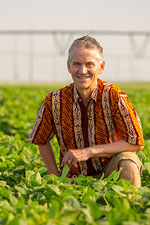Dr. Tom Warkentin (PhD)

Professor
Ministry of Agriculture Strategic Research Program (SRP) Chair in Field Pea and Soybean Crop Breeding and Genetics

Professor
Ministry of Agriculture Strategic Research Program (SRP) Chair in Field Pea and Soybean Crop Breeding and Genetics